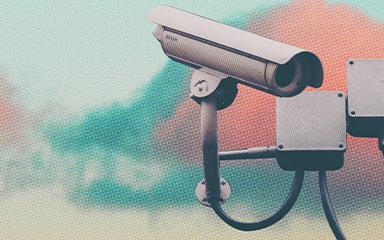Healthcare in Web 3.0: Prepare for Blockchain and the Future of EMRs
Healthcare in Web 3.0: Prepare for Blockchain and the Future of EMRs
If you want to stay with the times, you have to look to the future
When it comes to concepts like Web 3.0 or blockchain, it’s easy to think, “That’s way into the future,” or “We don’t need to think about that right now.”
But the reality is that there’s a future where PHI and electronic medical records (EMRs) are controlled by individuals rather than “owned” by health systems — not unlike what cryptocurrency is currently doing in the financial space.
In fact, this isn’t just the future, it’s something that’s been on the table in healthcare for years. In 2016, the “Blockchain Challenge” was announced by the Office of the National Coordinator.
This initiative challenged health systems and industry SMEs to dive into the potential of using blockchain technology and the general data ledger to address common concerns around today’s EMRs, such as scalability, data privacy, and safety, all with the end goal of creating a long-term, consumer-friendly solution that allows a secure way for individuals to access, manage, and “own” their data.
The initiative found that giving patients the ability to control their PHI and medical records had the potential to lead to a better continuum of care across providers and improve the overall quality of care delivered to patients. Additionally, blockchain-based sharing could allow for general ledger sharing, which is far more secure than what we see in today’s EMR systems.
“The security and privacy of data that is intrinsic to blockchain is nothing new to the healthcare industry, and it could be the answer to solving the mass data storage, security, and sharing issues facing the health industry while building trust between consumers and their healthcare team." —Kathleen Perley, DECODE Founder + CEO
How do you respond when technology in healthcare levels the playing field?
Sounds great, right?
While the technology is next level and comes with the promise of patient empowerment, it also creates a challenge for healthcare marketers. The ability of patients to truly be owners of their medical records levels the playing field between major health systems who have used connected EMRs and technology across their organization as a key differentiator, and private practices who couldn’t afford to keep up.
In other words, you can no longer rest on the laurels of being a connected health system.
So how can you prepare your organization for this impending transition?
Although we’re still potentially five years away from a world with patient-owned EMRs, there are things you can begin to do today that will impact your ability to create connections, drive value, and retain preference amongst your prospects and patients. Here are three immediate steps you can take:
- Transforming Your Value Proposition: We know the best care experience happens when patients are active participants in their health and wellness journey. Preparing for a new approach to health information management — which will soon be placed in the hands of your patients and their caretakers — means building value propositions that go beyond the expected and building preference with patients now. It means supporting a delivery of care that truly puts the patient in the driver’s seat.
- Refining Your Reasons To Believe: When upgraded technologies and new ways of doing things arrive, so does the need to transform your perspective of how you’re meeting your patients’ and communities’ needs today. It’s time to dig deep and move beyond what you’ve always done to connect with your patients, who will soon have the information they need at their fingertips. This means defining — at an organizational level — how you create value: services, outcomes, equipment, mission, programs, community outreach, and other meaningful differentiators that resonate with our audiences’ demands.
- Adopting + Integrating Digital Tech: It won’t be long before blockchain and the healthcare internet of things (IoT) — which includes devices such as wearable health tech, telehealth tools, home scales, etc. — create a seamless cohesion between healthcare and wellness. How exactly will this happen? Healthcare IoT can collect patient-generated health data (PGHD) and add it to EMRs “owned” by the patient, helping create a full picture of their everyday wellness habits and physician-guided healthcare recommendations.
Here’s the bottom line: The rapid digital transformation experienced by the healthcare industry in the three years since COVID-19 began has shown that the future of healthcare tech can be here before you know it — and when you least expect it. And in 2023, you can’t afford to miss out on the opportunity to prepare for what’s next, today.
You can read up on Web 3.0 and other healthcare technology trends in our 2023 trends report.


